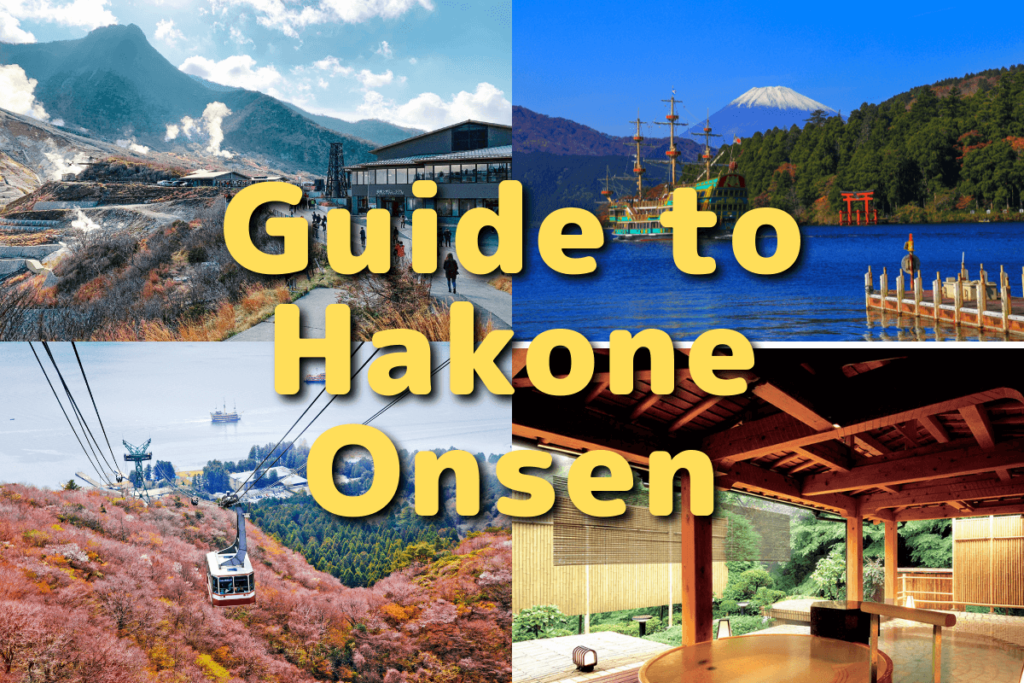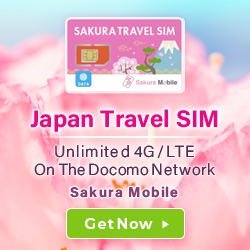Hakone is a famous onsen town, known for its hot spring water and fresh air, located only 80 minutes away from Shinjuku Station (Tokyo).
If you want to experience traditional Japanese culture while staying within a few hours of the city, put a trip to Hakone on your itinerary when you visit Tokyo.
I, as a member of Sakura Mobile Blog Team, have created a complete guide to Hakone so that even first-time visitors to Japan can enjoy Hakone and its Onsen 120%. I have actually been to Hakone many times! This guide is based on my own experience and I tried recommending the most interesting things around Hakone.
This article will help you find the best onsen ryokan, things to do, recommended food, restaurants, and more!
Have you booked your SIM card or pocket WiFi for your trip to Japan yet?
In Japan, you’ll want to be connected without missing out on high speed data and internet!
By reserving online before departing, you can
- Lower your rental fees
- Avoid stock shortages at the airport
To learn more about data and WiFi options for your trip, check out our products below.

Hello readers! Sakura Mobile is a SIM & WiFi service provider for international residents and tourists in Japan.
Our global editorial team living in Japan will introduce the charms of the country based on what we have actually experienced and felt.
Table of Contents
- What kind of place is Hakone Onsen?
- Introducing Hakone Onsen’s charms
- Ryokan and hotels at Hakone Onsen
- Things to do in Hakone
- Food and restaurants around Hakone Onsen
- Two-day one-night travel itinerary
- When to visit Hakone Onsen
- How to get to Hakone Onsen
- Hakone Onsen map
- Things to keep in mind
- Conclusion
1. What kind of place is Hakone Onsen?
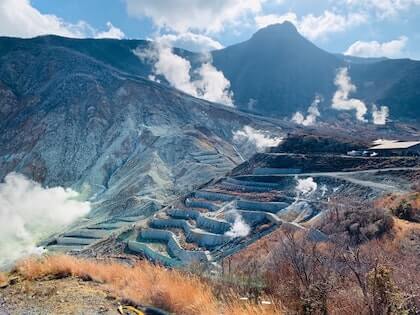
Hakone Onsen is a hot spring town just a short trip away from Tokyo. Located on the southwest side of Kanagawa Prefecture and at the base of the tallest mountain in Japan, Mount Fuji.
Hakone is a historic town that was a checkpoint created on the Tokaido highway. It connected Edo (Old Tokyo) with Kyoto. One of the main roles of the checkpoint was to control weapons from coming into Edo and the families of feudal lords from fleeing their captivity in the capital. Travelers here were stopped by guards and had their travel permits and cargo checked.
As travelers rested in Hakone before starting the home stretch of their journey to Edo, they enjoyed the natural healing effects of the Onsen water in Hakone. There are many different sources throughout Hakone Onsen, but the main benefits include helping with joint and muscle pain, healing cuts and burns, moisturizing dry skin, helping with insomnia, and increasing blood circulation.
Before Covid, over 20 million people would visit Hakone every year, or about 50,000 every day. It has slowly been getting back to its pre-covid number of visitors and is one of the most visited places by Japanese and international tourists alike.
↑ Go back to the table of contents
2. Introducing Hakone Onsen’s charms
Hakone has plenty of charms and things that you can’t experience in Tokyo. This section will introduce 3 of the best parts of Hakone Onsen that we think you shouldn’t miss.
Enjoy the nature of Hakone
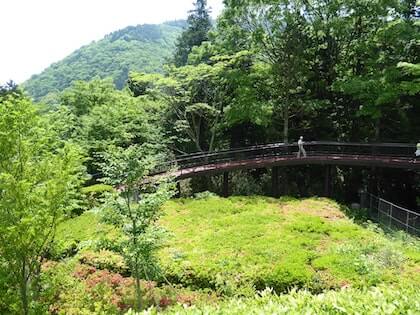
Something hard to do in Tokyo is enjoy nature and fresh air. Of course, there are plenty of parks like Yoyogi, but they can’t compare to the amazing nature of Hakone.
Hakone is just a small piece of the larger Fuji-Hakone-Izu National park. Enjoy Lake Ashinoko and the surrounding forests that stretch out as far as the eye can see. On clear days, you can enjoy views of Mount Fuji.
Many of the attractions in Hakone are based on nature, like Owakudani, the natural hot spring volcano, Gora Park, the beautifully kept park in the center of Gora, and Hakone Shrine, a shrine with a large red tori gate on the banks of Lake Ashinoko.
Enjoy the art
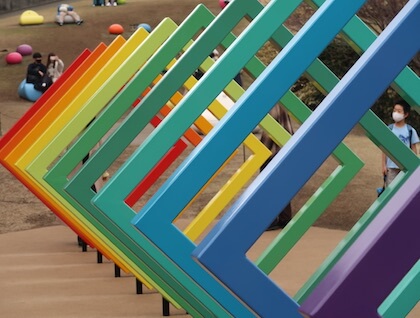
Hakone is packed full to the brim with amazing museums. Take a stroll through gardens with art installations or have a peaceful meal at a cafe that’s attached to a museum.
The Hakone Open-Air Museum has over 100 sculptures on display around its gardens. You can enjoy the works of the greats like Picasso while strolling around the gardens. Climb the complex Symphony of Happiness stained glass sculpture.
Or check out the POLA Art Museum and enjoy contemporary works that blend with the nature that surrounds them. Explore the nature walk and the surrounding forest while appreciating the large sculptures that don’t disrupt the flow of nature.
Enjoy the various onsen
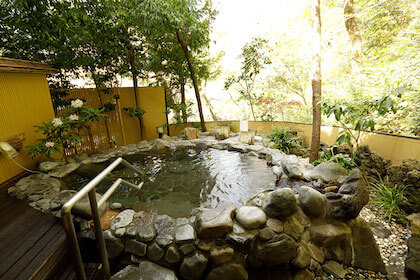
Hakone has been home to some of the most famous onsen in Japan. People travel from all over the world to enjoy the healing and beautifying effects of the mineral-rich waters. Relax in a warm bath while breathing the fresh air in the Japanese wilderness.
To enjoy the waters, book a hotel or Japanese ryokan that has an onsen, or find a place that accepts daytime visitors. If you get nervous being nude around strangers, just know that you are not alone. Book a room with a private outdoor onsen attached or choose a hotel that has a private onsen that you can rent.
↑ Go back to the table of contents
3. Ryokan and hotels at Hakone Onsen
Up next are a few ryokan and hotels that we recommend staying at when you visit Hakone. There are a few different price points, but if you want a more in-depth review of more ryokan in Hakone, check out the article below.
Hakone Yumoto Onsen Hotel Nanpusou
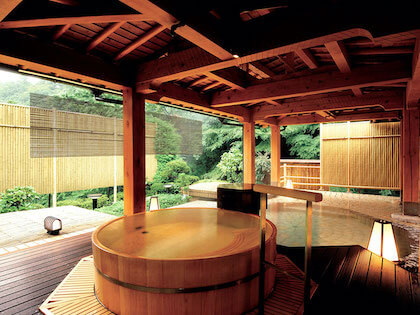
Take a taxi for 5 minutes or take a 20-minute walk from Hakone Yumoto Station to get to Hotel Nanpusou. Forget the hustle and bustle of the city and relax in nature here!
You can book a room with open-air onsen attached, a Japanese-style room, or a Western-style room. A plan with 2 meals and 1 night starts at around 13,000 JPY per person. We recommend getting the meal plan, as they serve a traditional Japanese course meal for dinner that features many seasonal items.
The inn is popular among Japanese for its reasonable prices and great Japanese hospitality. From the outdoor onsen, you can hear the river. If you want to experience traditional Japanese culture in Hakone, do it while relaxing in an outdoor onsen at Hotel Nanpusou!
Gora Kadan

Gora Kadan is a luxury hotel with an amazing and traditional Japanese atmosphere. Almost every room that they offer is different, and most come with their own private open-air onsen. They are a short 3-minute walk from Gora station, but if you give them a call when you arrive, they’ll send a car to pick you up!
Gora Kadan is expensive compared to other ryokan in the area, but the experience and hospitality are unmatched! If you want to splurge on your trip to Hakone, definitely choose Gora Kadan.
Tonosawa Ichi no Yu Honkan
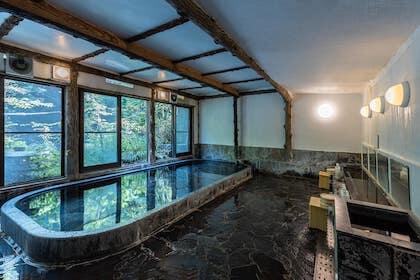
If you’re interested in traditional Japanese experiences, Ichi no Yu has been in business for over 390 years. They have retro indoor baths, Taisho Modern-style family baths, and guest rooms with open-air baths for the full Hakone hot spring experience. They have a ton of different types of plans and meal sets, so you can choose whichever experience will suit your needs best!
If you’re trying to save money on your trip to Japan, just know you can get the full traditional experience, with 2 meals and 1 night costing 9,870 JPY at Ichi no Yu Honkan.
Hotel Green Plaza Hakone
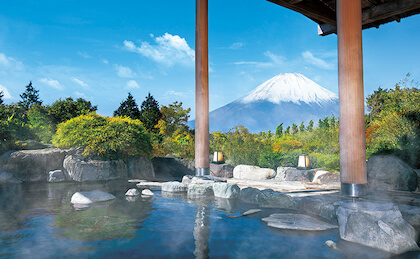
If you want a beautiful view of Mount Fuji and the surrounding mountain range, Hotel Green Plaza Hakone is a good choice. Green Plaza is located 860 meters above sea level, a 3-minute walk from Ubako Station on the Hakone Ropeway.
On clear days, you’ll be able to enjoy Mount Fuji from the open-air baths. They have rooms with tatami mats and beds, so you can enjoy traditional Japanese flooring without having to sleep on the floor! Hotel Green Plaza is a convenient location for sightseeing around Hakone, and 2 meals and 1 night starts from 14,000 JPY.
↑ Go back to the table of contents
4. Things to do in Hakone
Next are a couple of things that we recommend doing when you visit Hakone. They are split up into categories based on themes.
Activities – Nature
Owakudani
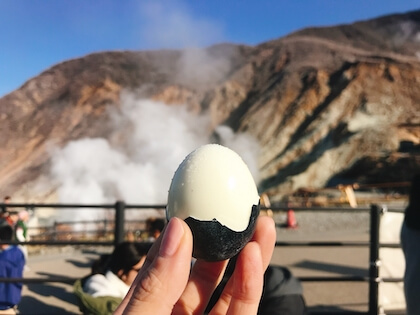
Owakudani is one of the stops on the Hakone Ropeway. It’s an active volcanic zone and was created the last time Mount Hakone erupted over 3000 years ago. Owakudani is known for the black hard-boiled eggs that are cooked in the sulfurous waters.
On clear days there are good views of Mount Fuji. There are also many hiking trails, but they may be closed off if there is a lot of volcanic activity.
To be honest, the eggs taste just like regular hard-boiled eggs to me, but eating one is said to extend your life by 7 years! Owakudani looks like a place from outer space, so we recommend taking a quick break there to explore the volcanic scenery!
Lake Ashinoko
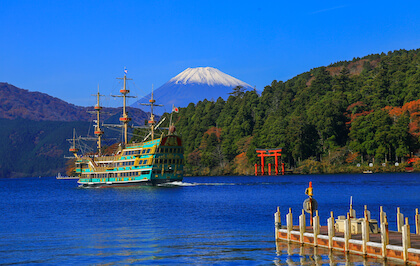
There are multiple ways to experience and enjoy Lake Ashinoko, but we recommend riding the pirate ship ferry. There are a total of 3 stops, and they make a complete circle. Something to note is that the last ferry is pretty early in the day. The shores of the lake are largely untouched except for around the ports, so you can really take in the beautiful natural Japanese wilderness.
I’ve heard that the views of Mount Fuji over the lake are the best, but when I rode the ferry it was cloudy over the lake and I couldn’t see Fuji. If you have the option, definitely plan to ride the ferry on a clear day!
After riding the Pirate ferry, it’s easy to get back to Hakone Yumoto Station. The ports connect to the Hakone Ropeway at Togendai Station, and Hakone Tozan Bus stops at Hakone-machi and Moto-Hakone ports on the southern sides of the lake. The bus will take you back to Hakone Yumoto Station and will complete the Hakone Freepass loop, a sightseeing circle around Hakone that connects all of the popular destinations around Hakone with public transportation.
Gora Park
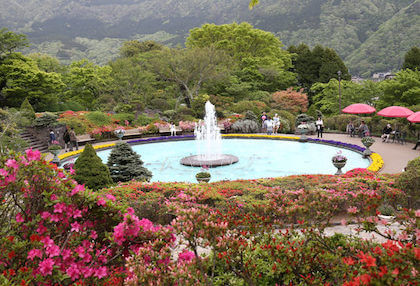
Gora Park is a French-style park located next to Gora Station. This park is the perfect spot to relax on a nice day and enjoy the Hakone fresh air. There is a botanical garden and a flower garden, both located in greenhouses within the park. There is also a restaurant in the park that sports a view of the main fountain and tea house.
If you want to take home a personal souvenir from Hakone, visit the Gora Park Craft house. They offer craft activities that range from 1,000 to 5,000 JPY and take less than an hour to finish. Try your hand in glass blowing and etching, pottery, or dried flower arrangements, located just a short walk from Gora Station.
↑ Go back to the table of contents
Activities – Museums
Hakone Open-Air Museum

The Hakone Open-Air Museum is a quick 2-minute walk from Chokoku no Mori Station on the Hakone Tozan Railway. Enjoy sculptures that were designed to fit in perfectly with the surrounding nature. Most of the museum is outside, so if you put this on your itinerary, make sure to plan for the weather!
The paths are lined with huge sculptures, interactive exhibits, mazes, and of course, an onsen footbath. The Picasso Pavilion has over 319 of his works displayed in a way that tells the story of his life and the evolution of his art. Discover hidden lakes and secret art installations as you explore the expansive grounds in Hakone!
POLA Museum of Art

The POLA Museum of Art is a modern art museum built in the middle of the forests of Hakone. It’s designed to blend in with the surrounding nature and the nearby Hayakawa River. It’s filled with thousands of paintings, sculptures, and art installations by Japanese and European artists.
Surrounding the large underground museum is a nature trail where guests can search for sculptures among the beautiful Hakone nature. Listen to the sounds of birds and small animals while exploring the trail. The POLA Museum of Art is only a 15-minute bus ride from Gora station on the Hakone Tozan Bus.
Hakone Glass no Mori
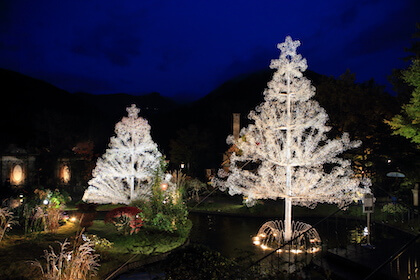
Hakone Glass no Mori is a Venetian Glass museum located in Sengokuhara on the northern side of Hakone. It has Italian-themed buildings, museums, shops, and gardens. They display a collection of over 100 pieces of Italian glassware and even have live Italian ballads periodically throughout the day.
Outside, there is a large pond modeled after an Italian canal. Take a stroll in the garden and enjoy the large sculptures from modern and classical artists. The well-kept trees and flowers among the beautiful Hakone Mountain Range are sure to be breathtaking. Take a Hakone Tozan bus from Hakone-Yumoto Station for 20-minutes to get there.
↑ Go back to the table of contents
Activities – Onsen experiences
Hakone Kowakien Yunessun
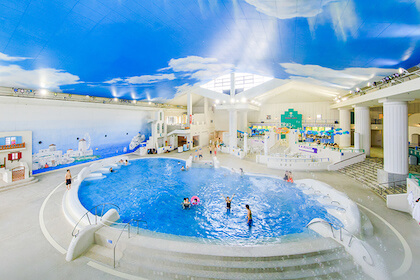
Yunessun is an onsen theme park in Hakone. They offer various unique baths that you can enjoy with your friends and family. Some popular themed baths included a coffee bath made from real coffee, a wine bath, a green tea bath that is supposed to improve your blood circulation, and a Japanese sake bath that warms you up! Just know that none of them are for drinking.
When I went I forgot a towel! Luckily they have a shop where you can rent towels, bathing suits, and anything else that you would need at a water park. If you feel like packing light, or decide to go to Yunessun last minute, don’t worry! You can buy or rent everything that you need to have a fun day when you arrive.
The wine bath was cool and smelled like grapes, but my favorite was the coffee bath! Yunessun is great for people who want to get the rejuvenating effects of the Hakone Onsen water, but aren’t ready to be naked in front of strangers, or for those who aren’t 100% sure about the etiquette of Japanese onsen!
Get to Yunessun by taking the Hakone Tozan bus from Hakone-Yumoto station. If you have tattoos, you will be barred from entering the onsen side of Yunessun. Covered tattoos are allowed in the water park area, a great option if you have tattoos!
Hakone Hot Springs Baths
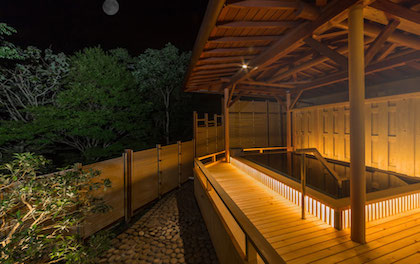
If you go to Hakone, the most popular onsen resort in Japan, you probably should enjoy the healing effects of the onsen water! There are many different bathhouses, ryokan, and hotels in the Hakone region that you can stay at overnight, or just visit during the day. Many of the ryokan that are open to daytime visitors are located around Hakone-Yumoto station, perfect for resting after a long day of traveling around Hakone before heading back to Tokyo.
If you’re okay with getting in a bath with strangers or are okay with spending a little extra to get a private bath for you and your friends or family, getting in an onsen is a must-do Japanese experience. Check out places like Hakone Yuryo, Yumoto Fujiya Hotel, Kappa Tengoku, and Hakone Kamon for their daytime admission costs.
↑ Go back to the table of contents
Activities – History
Kyukaido
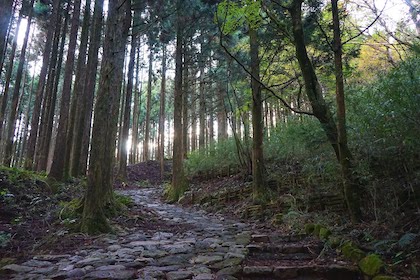
Visit the Kyukaido, a part of the original Tokaido highway. It was a 500-kilometer stretch of road that connected modern-day Tokyo (or Edo) and Kyoto during the Edo period (1603 to 1868). A short piece had been restored and opened to the public.
The walk is 6 kilometers long and takes about 2 and a half hours to complete. The history of the route can be traced back to the times when travelers walked it in the Edo period. Many of the Ryokan and Hotels in Hakone near the Kyukaido also have long and dated histories.
Hakone Shrine
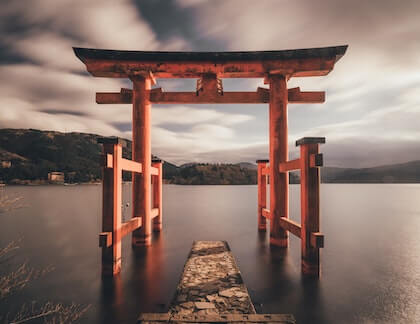
Hakone Shrine is one of the most famous power spots in the Kanto region with a history of more than 1,200 years. The entrance and grounds are lined with old cedars that create a mysterious atmosphere. If you want, you can definitely experience traditional Japanese culture here.
The famous red tori gate on the shores of Lake Ashinoko is located here. We recommend that you get there early in the morning, as there are almost always long lines of visitors taking pictures at this amazing photogenic spot!
↑ Go back to the table of contents
5. Food and restaurants around Hakone Onsen
Next up, we’ll introduce some awesome lunch spots around Hakone that we recommend you stop at if you have the chance.
Restaurant35 (Western food)

Restaurant35 is a restaurant that makes Western-style foods with local specialties and seasonal ingredients from Hakone. Their dishes are made with fish and other seafoods from the nearby Odawara and vegetables from the neighboring city of Mishima. Enjoy course meals that will leave you full paired with wines and dry-aged meats. Their standard course includes 7 different dishes.
During some periods, they require an advanced reservation as ingredients are fresh and limited. Give them a call ahead of time, or make a reservation to enjoy this awesome dining experience in Hakone.
Hakone Yashima (Japanese Food)
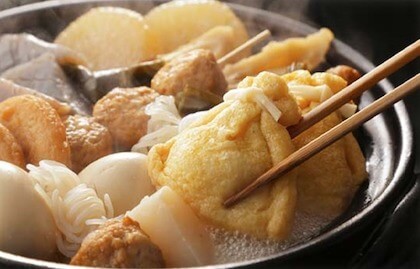
Hakone Yashima is a traditional Japanese oden restaurant. Oden is a Japanese soup dish that is made up of various ingredients like eggs, daikon, konjac, and fishcakes boiled in soy-flavored soup stock. Oden restaurants are rare in Japan, and the taste of Hakone Yashima is on a different level compared to the flavor of 7-Eleven.
They use a golden soup stock to boil various Japanese vegetables and meats to make them delicious! They make them with high-quality ingredients and mineral-rich spring water from the Hakone onsen source and use a special rice oil when preparing ingredients so as to not destroy the natural flavors.
Hakone Yashima is quick a 5-minute walk from Motohakone Port and something that you shouldn’t pass up if you want to experience a traditional Japanese taste in Hakone.
Tamura Ginkatsu Tei (Japanese food)
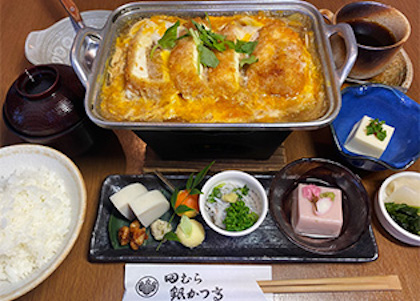
Tamura Ginkatsu Tei is a Japanese restaurant that sells cutlet sets. Katsu is a fried cut of usually pork or chicken with a crust made from panko bread crumbs. Enjoy their specialties like Tofu Katsu and Pork Katsu.
Check out this restaurant, as it’s one of the most popular in Gora. The second-generation owner invented their popular original tofu cutlet stew, which is made from special Hakone Gin tofu, and sandwiched between minced meat, deep-fried, with dashi and egg. If you’re searching for a delicious traditional Hakone food experience, look no further!
Tamura Ginkatsu Tei is a quick 3-minute walk from Gora Station on the Hakone Tozan Railway and Hakone Cable car. Be prepared to wait in line for a while as it’s very popular!
La Terrazza (Western food)
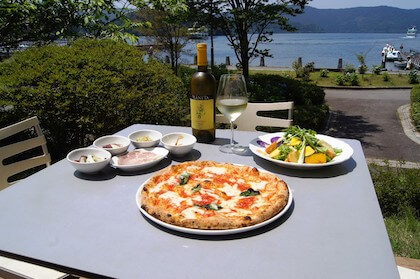
La Terrazza is an Italian spot with a great lakeside view of Lake Ashinoko. They offer pizza, pasta, salads, coffee, wine, and much more. Eat your fill of delicious foods while taking in the Japanese lakeside views.
They offer more than 30 kinds of Neapolitan pizzas, all baked in an oven imported from Naples! They make their dishes with locally sourced ingredients, so you can enjoy delcious Italian cuisine with the freshest ingredients. When the weather is nice, we recommend eating outside. La Terrazza is located just a few minute’s walk from Motohakone Port.
Sushi Miyafuji (Japanese Food)
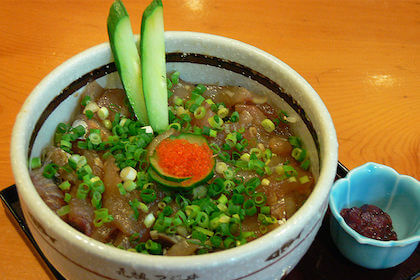
This cozy sushi restaurant is located near Miyanoshita Station. If you love sushi, definitely check out Sushi Miyafuji. It has become famous for its delicious rice bowl with fresh raw horse mackerel. Every morning, the owner brings in fresh horse mackerel fish from Odawara Port. They mix it with a sweet and spicy sauce and plum paste and serve it over warm rice.
If you want to try some original dishes that you can only experience in Hakone or some fresh sushi, definitely try out Sushi Miyafuji. Try and get there early, as there is usually a line before they even open!
Have you booked your SIM card or pocket WiFi for your trip to Japan yet?
In Japan, you’ll want to be connected without missing out on high speed data and internet!
By reserving online before departing, you can
- Lower your rental fees
- Avoid stock shortages at the airport
To learn more about data and WiFi options for your trip, check out our products below.
↑ Go back to the table of contents
6. Two-day one-night travel itinerary
DAY 1
8:45 Arrive at Shinjuku
If you are going to Hakone from Tokyo, it’s best to go from Shinjuku Station.
Before leaving Shinjuku, make sure to buy the Hakone Freepass! It’s a money-saving pass that allows you to use Hakone’s public transport unlimited times! With the cost of the pass, you can to Hakone and get around Hakone without worrying about buying tickets and while saving money!
9:00 Depart from Shinjuku
It takes about 80-90 minutes to get to Hakone-Yumoto Station from Shinjuku! We recommend spending a little extra to take the Limited Express Romancecar, which is the most comfortable and fastest way to get there.
10:30 Arrive at Hakone-Yumoto Station
From Hakone-Yumoto Station, you’ll want to head to Gora Station on the scenic Hakone Tozan Railway. In the summer, you’ll be able to see blooming flowers on the way to Gora.
11:15 Arrive at Gora Station
Here, we recommend that you grab lunch at one of the amazing restaurants.
Eat at Tamura Ginkatsu Tei or enjoy a light lunch at COFFEE CAMP.
12:30 Walk to Gora Park
After lunch, take a stroll in Gora Park. Enjoy the flowers and relax in nature or try your hand at creating something at the craft house. If you want to enjoy a traditional Japanese experience, try the teahouse inside the garden and relax on Japanese grass-woven tatami mats. Once you’re done, head towards Sounzan Station on the Hakone Tozan Cable Car.
14:20 Arrive at Sounzan Station
Sounzan station has amazing views, as well as a footbath where you can relax and look over the Sagami Bay on clear days. From Sounzan station you’re gonna want to transfer to the Hakone Ropeway, towards Owakudani station.
14:45 Arrive at Owakudani
Owakudani is a must-see when going to Hakone. It’s a volcanic area where lots of hot water is sourced for onsen in the area. The local specialty is hard-boiled eggs. The shells are stained black from the high levels of iron and sulfur in the hot water. Eating one is said to add 7 years to your life! Afterwards, head back to the ropeway towards Togendai!
15:30 Arrive at Togendai
Togendai is the last stop on the Hakone Ropeway, but that doesn’t mean the fun rides have to stop! Transfer at Togendai to the Hakone Sightseeing cruise. Hop on a pirate ship and set sail on Lake Ashinoko towards Motohakone.
16:30 Arrive at Motohakone
Motohakone is the last stop on day 1. From here, head to your hotel and check-in for the night. Check out nearby shops and pick up some souvenirs.
17:30 Arrive at your Hotel
After a long day of traveling and sightseeing, it’s time to relax! Below are a few hotels around Motohakone that have onsen and offer plans with dinner and breakfast. Finish the day with a soak in Hakone’s healing waters and get ready for tomorrow.
DAY 2
9:00 Breakfast
Most hotels offer meal plans. We recommend paying extra for the meal plan, as it’s not only convenient but usually of high quality. Hotels and Ryokan in Japan like to use locally sourced ingredients and offer an experience or taste that is famous in the region. After checking out, take a stroll to Hakone Shrine.
10:30 Hakone Shrine
This shrine has a ton of history and red Torii gates. One of the most famous red Torii gates in Japan is located here on the shores of Lake Ashinoko. Usually, there is a long line to snap a picture underneath it, so we recommend getting there early! Buy a charm that brings safety, and pull a fortune to see how your luck will be in the future!
11:30 Lunch
There are a ton of small restaurants around Motohakone. If you prefer sweets, try Hakone Cheese Terrace or Bakery & Table. If you want something more filling there are a ton of different restaurants in the area with a ton of different types of food.
After lunch, head towards Hakone Sekisho (Checkpoint) on foot or by bus.
13:30 Arrive at Hakone Sekisho
Experience the rich history of Japan at this traveler’s checkpoint in Hakone. This checkpoint was one of two used on the Tokaido highway to help travelers and control the flow of goods and people between Kyoto and Edo (Old Tokyo). It’s been recreated to show a snapshot of the olden days, and we recommend checking it out!
After you’re done time traveling, get on the Hakone Tozan Bus towards Hakone-Yumoto station.
15:00 Arrive at Hakone-Yumoto Station
The last stop on our tour around Hakone. Get off at Hakone-Yumoto Station and walk down the shopping street right outside the station. Grab a local snack like manju, Japanese candy, Japanese soft ice cream, Japanese fried fish cakes, charcoal fried fish, and more from the stores that line the street while you look for souvenirs!
When you’re ready, hop on the Limited Express Romancecar for Shinjuku.
18:30 Arrive at Shinjuku Station
Arrive back at Shinjuku Station to conclude your trip to Hakone!
↑ Go back to the table of contents
7. When to visit Hakone Onsen
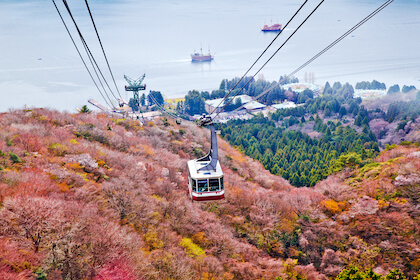
Hakone is busy on the weekends when all of the workers in Tokyo try to get some fresh air away from the city. Try to go on a weekday, but don’t worry if you can’t.
Hakone is a great place to visit year-round! Depending on the season, your experience will change.
For example, if you want to ride the Hakone Tozan Railway while viewing Hydrangeas, you’ll have to visit in June and July when they bloom. You also may have to make a reservation to get a spot on the special Hydrangea viewing train car! At night during June and July, they illuminate various sections of the route to show off the flowers.
Below is a rough guide to the seasons.
March, April, and May: These months are spring in Hakone. This is the busiest time of the year as it is unlikely to rain and the weather is comfortable. Enjoy warm days while you sightsee, blooming sakura trees, and cold nights when you hop in the onsen.
June, July, and August: These months are summer in Hakone. Be prepared for hot and humid weather. During the summer, the skies should be clearer and you’ll be likely to see Mount Fuji from everywhere.
September, October, and November: These months are autumn in Hakone. The weather is generally cooler and more unpredictable. If you go during these months, make sure to have a backup plan for the outside attractions in case it starts to rain.
December, January, and February: These months are winter in Hakone. Enjoy snowcapped mountain ranges and clear weather. Make sure to dress warm and book a hotel with an indoor onsen in case you get cold at night.
↑ Go back to the table of contents
8. How to get to Hakone Onsen
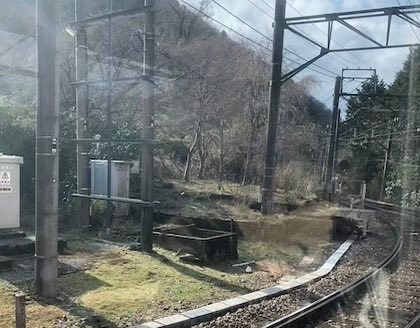
From Tokyo
By train
There are various ways to get to Hakone Onsen from Tokyo, but we recommend the Limited Express Romancecar from Shinjuku, as it’s the fastest (80 minutes), most comfortable, and has a discount when you buy the Hakone Freepass. It costs 2,330 JPY, or just 1,110 JPY if you have the Hakone Freepass.
By bus
Take the Odakyu Hakone Highway Bus from Shinjuku Station to the Lake Ashiko area. You’ll be taken to the Gotemba and then the Togendai area in 2 and a half hours for about 2,000 JPY.
From Kyoto
By train
From Kyoto Station, you can take the Shinkansen to Odawara Station for about 11,000 JPY. It takes about 2 hours. Transfer at Odawara Station to the Romance car to get to Hakone Yumoto Station in about 20 minutes. This last section of the trip is 230 JPY or free with the Hakone Freepass.
By bus
If you’re trying to save some money, it might be best to take an overnight bus and then arrive at Odawara Station in the morning. The price starts for the bus service below at 5,000 JPY and will take about 9 hours. Make sure to select the Kyoto station departure.
From Osaka
By train
From Shin-Osaka Station, you can take the Shinkansen to Odawara station for about 12,000 JPY. It takes about 2 and a half hours. Transfer at Odawara Station to the Romance car to get to Hakone Yumoto Station in about 20 minutes. This last section of the trip is 230 JPY or free with the Hakone Freepass.
By bus
If you’re trying to save some money, it might be best to take an overnight bus and then arrive at Odawara Station in the morning. The price for the bus service below starts at 5,000 JPY and will take about 10 hours. Make sure to select the Osaka station departure.
↑ Go back to the table of contents
9. Hakone Onsen map
Here is a map of all of the places, attractions, restaurants, and museums that we’ve mentioned so far.
↑ Go back to the table of contents
10. Things to keep in mind
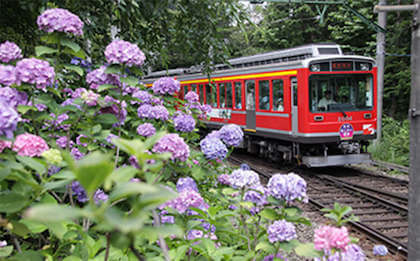
The number one thing that we recommend for first-timers in Hakone, or people who want to see everything is the Hakone Freepass. It makes traveling around Hakone much easier and cheaper. If you want to save money, you can take the regular express train to Hakone from Shinjuku for free with this pass or get a discount on the Romancecar. It also gets discounts at various attractions and museums. You can go all around Hakone for 6,100 JPY from Shinjuku or 5,000 JPY from Odawara.
Many of the attractions, restaurants and other things require reservations. Check ahead of time on the official websites when making your travel itinerary to make sure that they are open and that you reserve a spot if they require it. For example, the Owakudani trails are closed when there are high amounts of volcanic activity. Be careful to not plan the trails and other things if they’re closed!
If you’re unfamiliar with the rules of onsen, make sure to review them before getting in. Many hotels and ryokan do not allow people with tattoos or affiliations with gangs to enter onsen. It’s very disappointing, but it’s just the rules in Japan. If you still want to bathe in the rejuvenating waters, make sure to book a hotel or ryokan with a private onsen, or check out the Yunessun waterpark!
Many stores and restaurants only take cash! Make sure to bring enough money with you to Hakone, as money exchange machines are rare outside of the big cities. You can also withdraw Japanese money using foreign credit and debit cards at most convenience stores like 7-11 and Lawson, but you’ll have to pay small fees.
There are many activities that you can enjoy even if you don’t know Japanese! Be careful not to get lost, as there will probably be very few people and staff members who will be able to speak English. If you want to focus on relaxing, check out various English-guided tours of Hakone like the one below and leave it up to your tour guide!
↑ Go back to the table of contents
11. Conclusion
We hope our article was able to help you decide how to spend your vacation in Hakone! It’s a short trip from Tokyo and one of the most visited places in Japan by tourists and Japanese alike.
Enjoy Hakone National Park, which is only a short distance from Tokyo. If possible, try to spend two days in nature to truly relax. If your time in Japan is limited, we recommend going for at least a day to experience a traditional culture that you will not want to miss when visiting Japan.
Have you booked your SIM card or pocket WiFi for your trip to Japan yet?
In Japan, you’ll want to be connected without missing out on high speed data and internet!
By reserving online before departing, you can
- Lower your rental fees
- Avoid stock shortages at the airport
To learn more about data and WiFi options for your trip, check out our products below.

